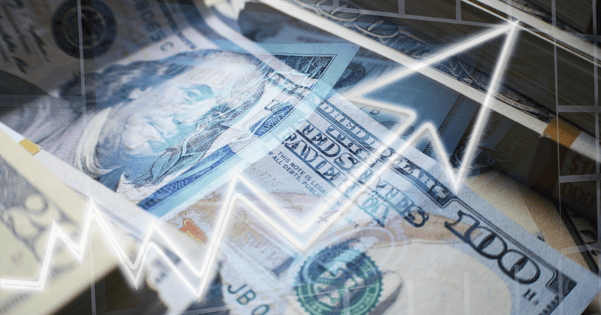The Labour Department said on Friday that inflation accelerated at its fastest pace in November, since 1982, putting pressure on the economic recovery and raising the stakes for the Federal Reserve. In the end, such pressure may push the dollar further higher.
The Consumer Price Index, which measures the cost of a wide-ranging basket of goods and services, rose 0.8% for the month, good for a 6.8% pace on a year over year basis and the fastest rate since June 1982. Excluding food and energy prices, the so-called core CPI was up 0.5% for the month and 4.9% from a year ago, which was the sharpest pickup since mid-1991. All these are far beyond the Fed’s target.
There is no question no matter how we look at it, that it is still very high inflation, even if you take out the extremes caused by the pandemic. This is the supply chain disruption, semiconductor-related inflation.
Market Reaction
Markets reacted positively to the report, with stock indexes on Wall Street rising, while government bond yields moved lower. Some economists thought Friday’s report could indicate even sharper inflation of greater than 7% for the headline number.
Fed officials have attributed the inflation jump to factors associated with the pandemic. Strong consumer demand for goods and supply chain bottlenecks have been major contributors, though the price increases have been stronger and more persistent than policymakers had anticipated.
Central bank officials have indicated that that will begin slowing the help they are providing to tamp down inflation. We expect the Fed to double the tapering of its asset purchases to $30 billion a month, which is likely to start in January, enabling the Fed to start raising interest rates as soon as next spring.
Inflationary pressures have been hitting workers hard. Though gross pay has increased 4.8% over the past year, real average hourly earnings accounting for inflation declined another 0.4% for November and are down 1.9% over 12 months, the Labour Department said in a separate release.
With unemployment claims running at their slowest pace since 1969 and gross domestic product expected to show strong gains to end 2021 after a lacklustre third quarter, inflation remains the biggest problem for the recovery.
The Nasdaq, as of Friday, was about 6% away from its latest record close on 19th Nov. The Dow was roughly 5% away from its 8th Nov record close. The S&P 500 was nearly 3.7% away from its 18th Nov record close. If the Fed is going to accelerate tapering, traders may dump more bonds and more inflows may fly into stocks, particularly in values and those cyclical ones. Stocks may aim at another historical peak level.
Fullerton Markets Research Team
Your Committed Trading Partner











